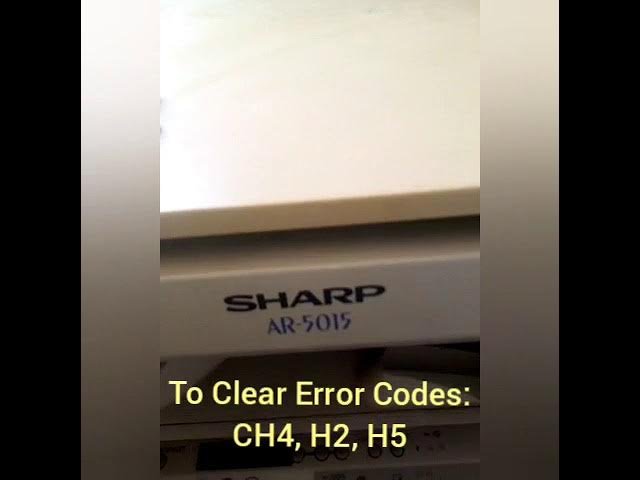
Ignoring this glitch isn’t just a minor inconvenience. Microwaves, like any machine, need to function correctly to ensure they’re safe to use. If the error persists and isn’t addressed, it could mean bigger problems down the line. Let’s dig a bit deeper and explore why it’s essential to resolve this issue and what might happen if you don’t.
Understanding the Error F2 Code
When your microwave shows an Error F2, it’s essentially trying to communicate with you about a specific malfunction. In most cases, this error indicates a problem with the sensor that measures the temperature inside the microwave. Picture it like a thermostat in your home. If your thermostat goes haywire, it might mean your home doesn’t cool or heat properly. Similarly, if the temperature sensor in your microwave isn’t working, it could misjudge how hot your food gets, leading to potential undercooking or overheating. Both scenarios aren’t ideal, especially when you’re in a hurry and rely on your microwave for quick meals.
Another critical aspect that might trigger this error is a malfunction in the control panel or touchpad. Imagine trying to operate a phone with a broken screen; it just doesn’t respond to your commands. If the touchpad is faulty, the microwave might not register your settings correctly, contributing to the F2 error. This isn’t just an annoyance; it can affect how your food is cooked, possibly leaving some parts scaldingly hot and others stone cold.
Ignoring these warnings is tempting — after all, if it looks like the microwave is still working, why bother fixing it? However, these small problems can escalate. What starts as an intermittent issue can grow into a complete breakdown, making your beloved microwave unusable. Hence, it’s wise to listen to what your appliance is trying to say and take appropriate action.
Effects of Not Fixing Error F2
Continuing to use your microwave despite the Error F2 can lead to a multitude of issues. Think of it as ignoring a slightly ill pet; if the problem isn’t taken care of, the consequences could be worse. One immediate impact is on the microwave’s efficiency. As it struggles with a faulty sensor or touchpad, it’s like operating a car with one flat tire — it might move, but not as effectively as it should. Food might not cook evenly, or it might take longer than usual, defeating the purpose of having a microwave at all.
Safety is another paramount concern. Microwaves work by rapidly heating food using electromagnetic waves. If the control system is faulty, there’s a risk of overheating. Overcooking certain types of food not only deteriorates the taste but can also pose fire hazards. Imagine your pizza slice catching fire because the microwave couldn’t sense it was too hot. Not only is it a mess to clean up, but it’s also dangerous for you and your home.
Moreover, continuously running an appliance with a known fault stresses its components. This can reduce the machine’s overall lifespan. You might save time today by not addressing the error, but eventually, you could find yourself shopping for a new microwave sooner than you expected. Ironically, trying to avoid the hassle now could lead you to a bigger one in the future. That’s why dealing with minor error codes quickly is always a smart move.
Steps to Fix the Error F2
Here’s the deal: addressing the F2 error isn’t as daunting as it might seem. Start by disconnecting your microwave from the power supply. Much like rebooting a computer, this can sometimes reset the device and clear minor glitches. Give it a few minutes, then plug in the microwave and see if the error persists. This simple trick might just do the trick if the issue was temporary.
If the error returns, it’s time to dig a bit deeper. Inspect the door seals and latch for any signs of damage or debris. A faulty latch can misinform the control board, leading to an error. Clean the microwave thoroughly, paying attention to hinges and seals. Sometimes, it’s the little things that make the biggest difference. If cleaning doesn’t resolve it, consider contacting a professional technician for a proper diagnosis. A trained eye can identify problems you might overlook and offer a precise solution.
In situations where you feel comfortable with DIY repairs, you might try replacing the temperature sensor or fixing the touchpad. However, if you’re unsure, it’s safer to let professionals handle it. Self-repair might void any warranties or cause more harm than good. A little professional intervention now could save a lot of hassle later.
Preventative Measures to Avoid Future Errors
Now, let’s talk prevention. No one wants to deal with appliance errors again and again. One of the first steps in prevention is keeping your microwave clean. Regularly wipe down the interior and control panel to prevent buildup that might interfere with sensors. Just like you wouldn’t let dust accumulate on your favorite gadgets, your microwave deserves a regular cleaning routine too.
Additionally, be cautious with how you use your microwave. Avoid slamming the door, as this can misalign seals and latches, leading to potential problems. Think of gently closing the door as you would closing your car door — a little care goes a long way. Also, ensure you’re not overloading the microwave. Follow the manufacturer’s guidelines on food weight and volume to prevent overstressing the appliance.
Finally, make it a habit to have regular maintenance checks. Just as you might take your car in for a routine service, occasionally having a technician inspect your microwave can nip potential issues in the bud. This proactive approach is a great way to ensure your microwave remains in tip-top condition and serves you well for years to come.
By addressing the Error F2 promptly and taking preventative measures, you can ensure your Sharp microwave remains a reliable kitchen companion, making meal prep a breeze instead of a source of stress.
